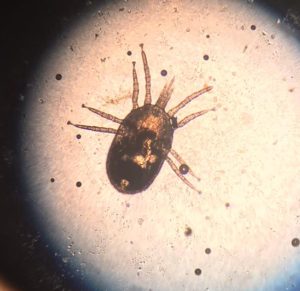The abnormal Egg
What is safe to eat?
The egg can tell us a lot about the health and nutritional status of a hen. In the backyard flock there are often questions over what is safe to eat or not.
Diseases such as infectious bronchitis, aMPv and mycoplasma (which all cause snicking, head shaking, nasal discharge), Newcastle disease (see notifiable diseases) and egg drop syndrome (a decrease in egg production caused by adenovirus) may also cause some of the egg abnormalities below.
If any bird begins to produce an abnormal egg on multiple occasions, seek the advice of your vet. Otherwise you may use this guide:
| Egg shell abnormality | Causes | Safe to eat? |
| No shell/soft shell | Young birds coming into lay. Sulphonamides (antimicrobial treatment, shouldn’t be used in layers). | No – risk of bacterial contamination. |
| Misshapen eggs | Young birds coming into lay. Older birds (due to reduced muscle tone in oviduct). Early calcification causing uterine damage. Adrenaline release due to stressful events such as moving and handling. | Yes |
| Corrugated eggs | Legume seeds such as peas. | Yes |
| Flat sided eggs | Release of two eggs into the reproductive tract at one time. Abnormal uterine pressure during calcification process. | Yes |
| Thin, soft eggs | Imbalanced ration: inadequate calcium, phosphorus, manganese and vitamin D3. Inadequate feed intake. Excessive temperature. Night disturbance disrupting the shell formation. Sulphonamides (antimicrobial treatment, shouldn’t be used in layers). Old birds. | Caution |
| Rough surface | Sulphonamides (antimicrobial treatment, shouldn’t be used in layers). Excessive calcium. Young birds coming into lay. Aging birds due to reduced muscle tone in oviduct. Adrenaline release due to stress. | Yes |
| Mottled egg surface | Humidity extremes. Marks from environment (e.g. red spots may be red mite) | Yes |
| Yellow shells | High levels of tetracycline antimicrobials. | No |
| Cracked eggs | Too high stocking density. Inadequate cage design, poor collection method. Reduced shell thickness. | Avoid as risk of bacterial contamination. |
| Pale eggs | Free range birds (sun bleaching). Sulphonamides (antimicrobial treatment, shouldn’t be used in layers). Nicarbazin (coccidiostat not routinely used) given in feed. Piperazine (wormer not routinely used). | Yes – providing no history of drugs as mentioned. |
| Egg contents abnormality | Cause | Safe to eat? |
| Loose air cell | Rough handling. | Yes |
| Blood spots | Inadequate environmental temperature. Birds have continuous light. Nutritional deficiencies: vitamin K, vitamin A. Stress. Mycotoxins (moulds/fungi – contaminated feed, feed bins, bedding). Vent pecking by other birds. Red mite infestation. Aging birds. | No |
| Abnormal yolk colour | Diet: access to pigmented plants, cottonseed and kapok seed meal in feed, oxidative breakdown of natural or synthetic carotenoids due to immunological challenge or inadequate vitamins in diet. Any underlying infection causing immune suppression will result in ingested carotenoids being broken down (oxidation) and used as antioxidants, instead of contributing to yolk colour. Birds require a healthy gut in order to absorb carotenoids from the diet. Bacterial contamination. | Yes, as long as not green. |
| Reduced yolk colour (with adequate carotenoid in feed) | Inadequate feed consumption. Mycotoxins. Oxidative breakdown of carotenoids due to immunological challenge and/ or inadequate vitamin uptake. Intestinal parasites. | Yes – as long as birds appear healthy. |
| Mottled yolk | Mild level of mottling is normal. Abnormal mottling may be a result of: Excessive dietary pigment, excessive chilling of eggs or partial freezing when laid in free range environment, high storage temperature. | Yes, if at a mild level. |
| Cheesy appearance of yolk | Chilling of eggs in free range systems, cotton seed meal, kapok seed meal. | Avoid |
| Yolk taint | Some birds genetically lack the enzyme for breaking down trimethylamine (TMA) in fishmeal, resulting in a fishy taint in the yolk. Excess dietary choline as TMA is released by bacterial fermentation of choline in the gut. Using unsuitable detergents to clean the eggs and storing them near strong odours during cooling may also result in taint. | No |
| Flat yolk | Nicarbazin (coccidiostat). High storage temperature. Excessive storage times. Inappropriate storage with eggs stored blunt end down. Watery white. | No |
| Watery white | Warm and prolonged storage. Genetic predisposition. | Yes if fresh. No if stored for too long. |
| Pink white | Cottonseed oil, kapok seed meal. Excess iron in water or feed. Bacterial contamination | No |
| Abnormal chalaza | Prominent chalaza is associated with watery whites. Ruptured chalaza may result from infectious bronchitis. | Yes |
 From left to right : Tapeworm, Ascardia (large worm), Heterakis (small worm at top right)[/caption]
">Download Results
From left to right : Tapeworm, Ascardia (large worm), Heterakis (small worm at top right)[/caption]
">Download Results Red mite under microscope.[/caption]
Red mite under microscope.[/caption]
 1-2: Clean and disinfect wound. Measure and apply foam ring, all toes must be supported. 2-3: Apply cotton wool/ softban in figure 8 pattern. Ensure bandage pressure is not constrictive. 3-4: Apply Vetwrap/ veterinary adhesive layer to secure soft layer. Again ensure excessive pressure is not applied.[/caption]
1-2: Clean and disinfect wound. Measure and apply foam ring, all toes must be supported. 2-3: Apply cotton wool/ softban in figure 8 pattern. Ensure bandage pressure is not constrictive. 3-4: Apply Vetwrap/ veterinary adhesive layer to secure soft layer. Again ensure excessive pressure is not applied.[/caption]